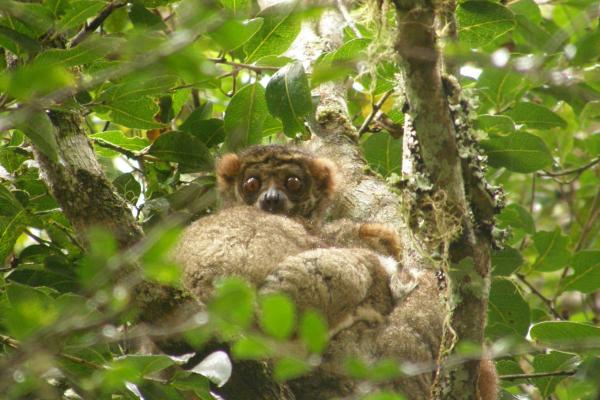Lemurs—wide-eyed, mostly nocturnal primates found only in Madagascar—once flourished on an island free of natural predators and competitors. That Eden is fading fast: almost every lemur species now appears on the IUCN Red List. This article summarises the latest numbers, the main drivers of decline, and the on-the-ground solutions conservationists are deploying. Feel free to republish or adapt this text for your wildlife website.

| IUCN Red List update | Lemur species assessed | Species classed as threatened* | Critically Endangered (CR) |
|---|---|---|---|
| 2012 | 103 | 95 % | 25 |
| 2020 | 107 | 98 % | 33 |
*Threatened = CR + Endangered (EN) + Vulnerable (VU)
Flagship victim: The iconic Ring-tailed Lemur (Lemur catta) has lost about 95 % of its wild population since 2000; perhaps 2 000 individuals remain and several former strongholds are already empty.
A 2016 study estimated 28 000 lemurs were captured for the pet market between 2010 and 2013.
Ring-tailed Lemurs are the prime target, but roughly 30 species are affected.
Captive lemurs are often kept alone, chained or in cramped cages, and fed inappropriate diets, making release impossible.

Lemur meat is eaten in both rural and urban areas.
In villages, about 30 % of consumed lemurs are purchased rather than hunted by the household, fuelling an underground market.
Roads, slash-and-burn farming, and pasture break large forests into scattered “islands.”
Those patches are hotter, drier, and poorer in food; lemurs moving between them risk car strikes and predation.

Madagascar’s rosewood (Dalbergia maritima) fetches higher black-market prices than ivory.
Loggers cut access tracks, fell non-target trees, and often hunt lemurs for camp meat, reducing fruit supply and nesting trees vital for breeding.

Artisanal mines gouge pits in protected forests in search of precious stones.
Poverty and corruption often neutralise law-enforcement efforts, speeding habitat loss.
| Strategy | Concrete measures | Progress & examples |
|---|---|---|
| Population monitoring | DNA hair traps, acoustic recorders, drone mapping | Data feed the Lemur Conservation Action Plan and refine priority zones |
| Habitat restoration | Replant bamboo, fruit trees, and canopy giants | Golden Bamboo Lemur (Hapalemur aureus) numbers rising in restoration plots |
| International law | CITES Appendix I bans global trade in the most imperilled species | Eulemur flavifrons and >20 other taxa protected; seizures and prosecutions increasing |
| Community ecotourism | Revenue-sharing park fees, guide training | Andasibe–Mantadia NP now draws >100 000 visitors per year, creating local jobs |
| Environmental education | School modules, radio drama, village “Lemur Week” events | Surveys show improved attitudes toward hunting and logging |
| Protein alternatives | Chickens, fish ponds, and pulse crops promoted in forest-edge villages | Early pilots cut lemur hunting pressure where adopted |
With 98 % of lemur species already on the brink, the clock is ticking. Unless illegal trade, habitat loss, and extreme poverty are addressed in tandem, many lineages could vanish within a decade. Yet hope remains: targeted research, tougher law enforcement, and genuine community partnerships are proving that lemur conservation and local livelihoods can grow together.
How you can help:
Never buy or pose with a captive lemur.
Choose certified sustainable timber; avoid rosewood products.
Support accredited Malagasy ecotourism operators and conservation NGOs.
Share reliable information—every informed voice strengthens the fight to keep Madagascar’s unique primates alive.
Referencias
LaFleur M, Clarke T, A, Reuter K, Schaeffer T: Rapid Decrease in Populations of Wild Ring-Tailed Lemurs (Lemur catta) in Madagascar. Folia Primatol 2016;87:320-330. doi: 10.1159/000455121
Gould, Lisa & Sauther, Michelle. (2016). Going, going, gone. Is the iconic ring-tailed Lemur (Lemur catta) Headed for Imminent Extirpation?. Primate Conservation. 30. 89-101.
Reuter, K., Gilles, H., Wills, A., & Sewall, B. (2016). Live capture and ownership of lemurs in Madagascar: Extent and conservation implications. Oryx,50(2), 344-354. doi:10.1017/S003060531400074X
Bibliografía
Ong, S., Carver, E. Enero. (2019). The Rosewood Trade: An Illicit Trail from Forest to Furniture. Disponible en: https://e360.yale.edu/features/the-rosewood-trade-the-illicit-trail-from-forest-to-furniture
John R. Platt. (2015). Ring-Tailed Lemurs Threatened by Illegal Pet Trade. Publication: Scientific American, a Division of Springer Nature America, Inc. Disponible en : https://blogs.scientificamerican.com/extinction-countdown/ring-tailed-lemurs-pet-trade/
animal tags: Lemurs
We created this article in conjunction with AI technology, then made sure it was fact-checked and edited by a Animals Top editor.